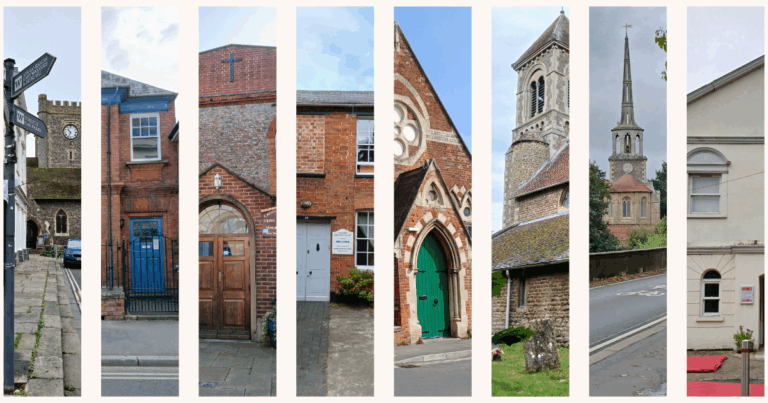
St Mary-le-More, Wallingford
The Town Church of Wallingford, flint-built and with a broad stocky west tower. St Mary’s was comprehensively rebuilt on older foundations in the nineteenth century, and the tower is in fact now the oldest part of it: it was originally built in 1653 after the former church was struck by lightning. Inside, the church has a spacious feel, with some rich furnishings. There is a marble pulpit (Onslow Ford, 1888) with bronze panels of saints inset, and a rood-screen which was given by ‘Miss Hedges, of Wallingford Castle’ in memory of her two sisters. Dedicated by the Bishop of Buckingham in 1925, it includes figures of saints associated in some way with the parish: Alban, Birinus, Nicholas, Osmond, and Frideswide.



Friends’ Meeting House

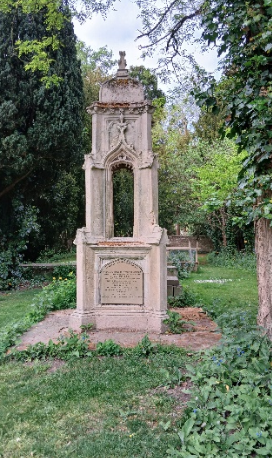

© John Ward
A simple brick-built house erected in 1724, set back from Castle Street at the end of a short alley, with sash windows, a brick floor, and a single room without a women’s gallery. It stands almost opposite the site of the disused churchyard of All Hallows, a medieval church adjacent to Wallingford Castle which (like the Castle) did not survive the Civil War. The grounds still preserve an early seventeenth-century monument to Thomas Bennett (d. 1616), a local benefactor.
St John the Baptist (RC)

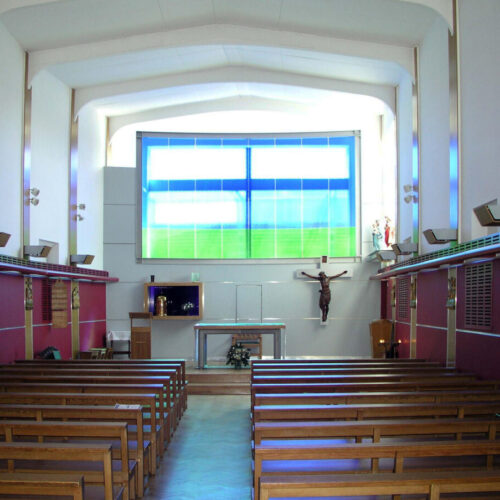
© John Ward
The brick-built St John the Baptist’s Church dates from 1799 when it was built as an Independent Chapel; it became a Roman Catholic church in 1924. It was apparently rebuilt behind in 1958, and further refurbished in 2000 (when a meeting room, accessed from Wood Street, was added), but it has retained its Georgian frontage looking out on Market Square.
Ridgeway Community Church

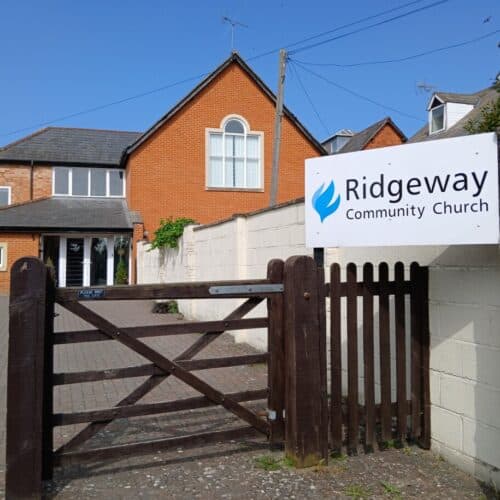
This church was originally built, in 1889, as a Primitive Methodist chapel. It passed into secular use, but was restored to a religious purpose at the end of the twentieth century. Today the main entrance is in Wood Street, and the entrance in St Mary’s Street gives access to the church office.
Methodist Church
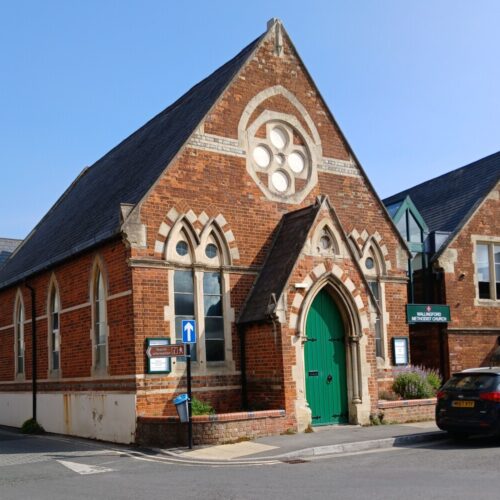

© John Ward
Built in 1872-3 of brick and stone. The adjacent building, the former Free Library and Literary Institute (1871) was later annexed to the church, and there is now a glazed link between the two dating from 20-06-7.
St Leonard’s, Wallingford
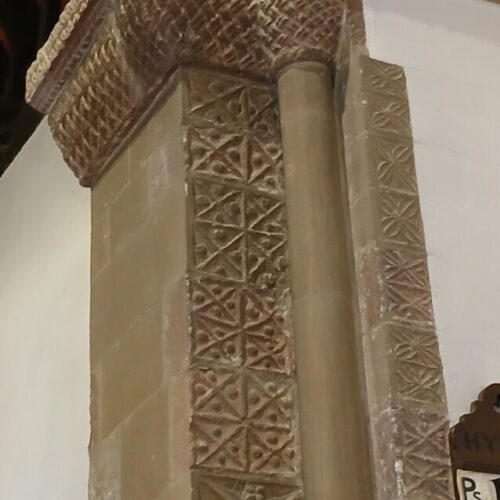

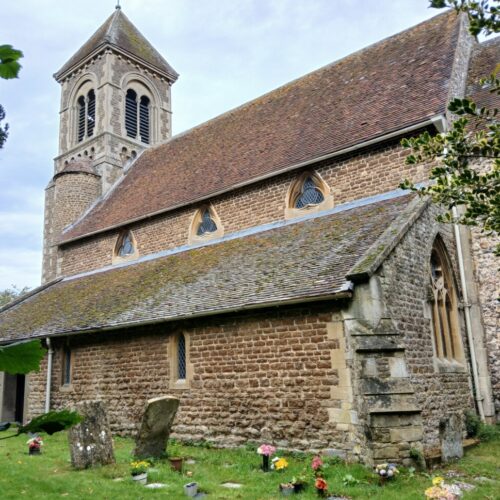
Another church with early origins, although some features (notably the west tower and the south arcade) are from an 1849 restoration. But there is real herringbone masonry on the north side, and inside there are wonderfully impressive tall arches between the nave and the apse.
The decoration (with the exception of heads on each side of the inner arch) is geometric, with patterns of stars and saltires, and a basket-weave design on the abaci. I thought the whole effect of the east end astonishing.
Baptist Chapel
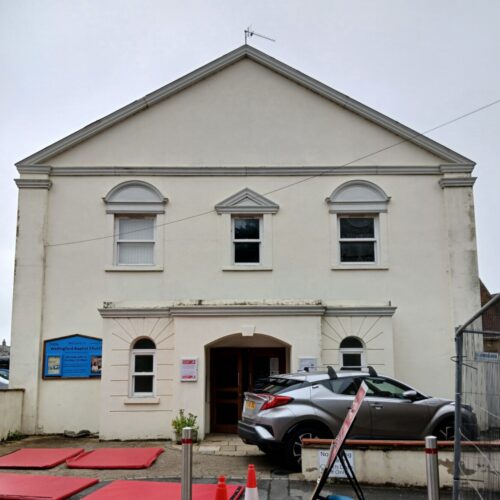

© John Ward
The chapel was founded in 1794, and then either rebuilt or enlarged in 1821. It looks almost directly across Thames Street to St Peter’s Church on the other side of the road.
St Peter’s
St Peter’s, now in the care of the Churches Conservation Trust, is an eighteenth-century building, as is Wallingford Baptist Chapel just opposite. St Peter’s was built 1760-9, and its distinctive pierced spire added a few years later, apparently at the behest of the great jurist, Sir William Blackstone (1723-80) as an eyecatcher from Blackstone’s home of the Castle Priory. The Blackstone family vault was in St Peter’s, and Blackstone himself is buried there. The spire certainly catches the eye, perhaps especially from the bridge as you cross the Thames into Wallingford.
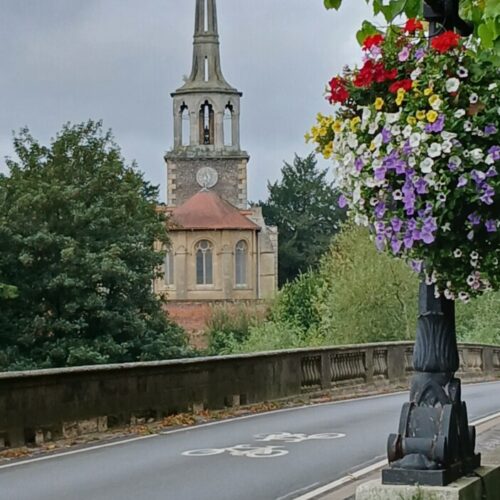
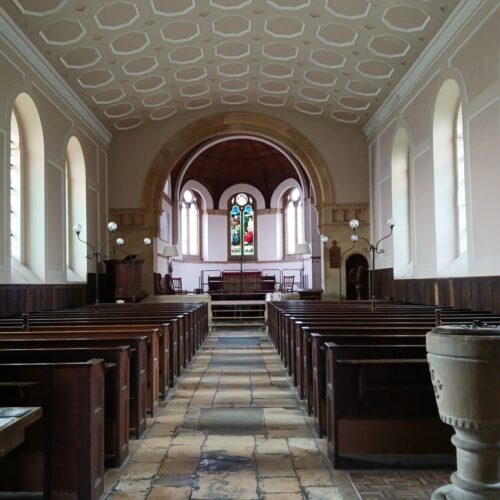

By Elizabeth Knowles
About the Author

Elizabeth Knowles is a renowned library researcher and historical lexicographer who devoted three decades of her career to Oxford University Press. Her time at OUP began with contributions to the OED Supplement and the New Shorter Oxford English Dictionary. Subsequently, she spearheaded the Quotations publishing program, solidifying her reputation as a leading expert in quotations and lexicography.
In 1999, Knowles assumed the prestigious role of Editor of the Oxford Dictionary of Quotations, a position she held continuously until her retirement from OUP in 2007. Under her editorial guidance, the eighth edition was published in 2014, marking a significant milestone in the dictionary’s history.
Knowles is a prolific writer and lecturer on the history of quotations and dictionaries. She has shared her extensive knowledge with both academic and general audiences, significantly enhancing our understanding of the role of quotations in language.
Beyond her work on the Oxford Dictionary of Quotations, Knowles is also the editor of “What They Didn’t Say: A Book of Misquotations” (2006) and “How To Read a Word” (2010). Her work continues to inspire and inform scholars, writers, and readers fascinated by the English language.
All photographs © Elizabeth Knowles unless otherwise noted
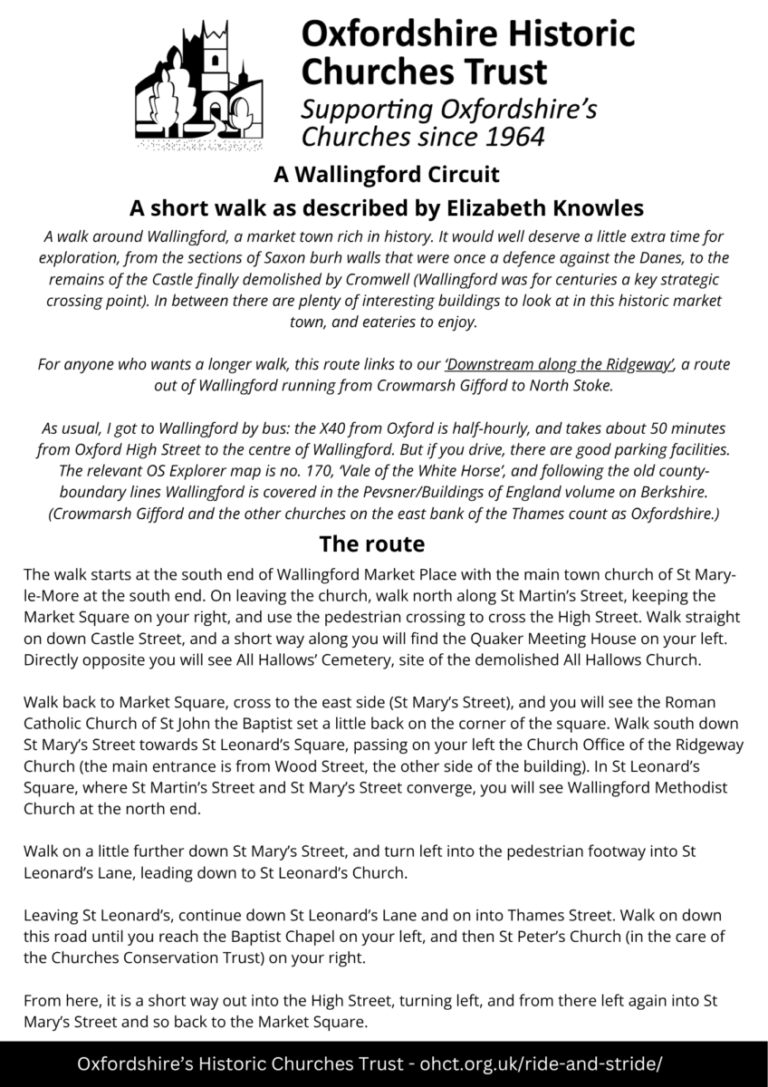
Churches visited on this route